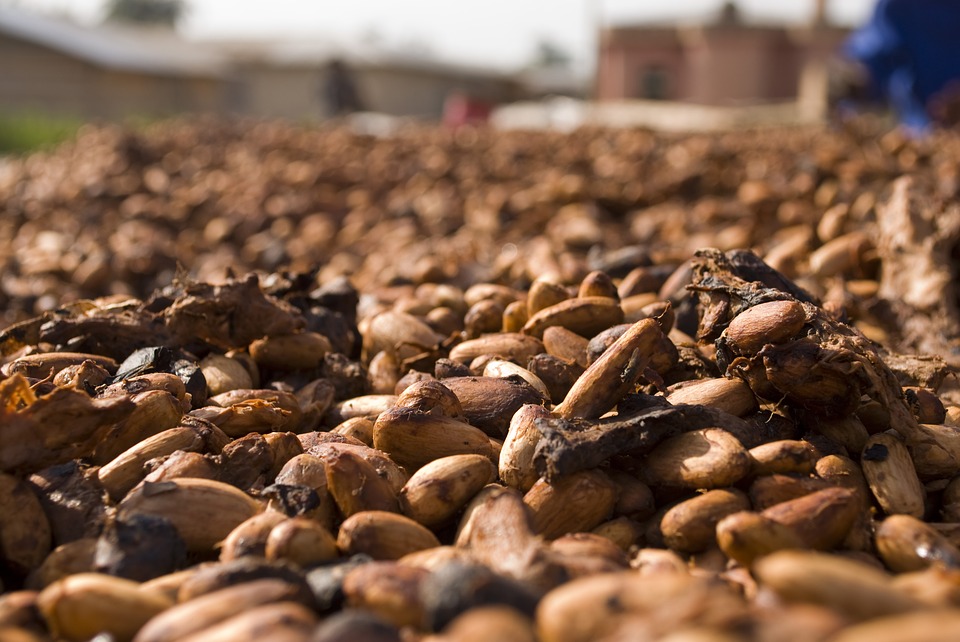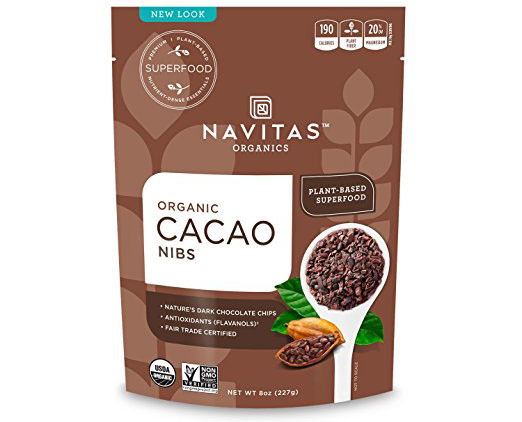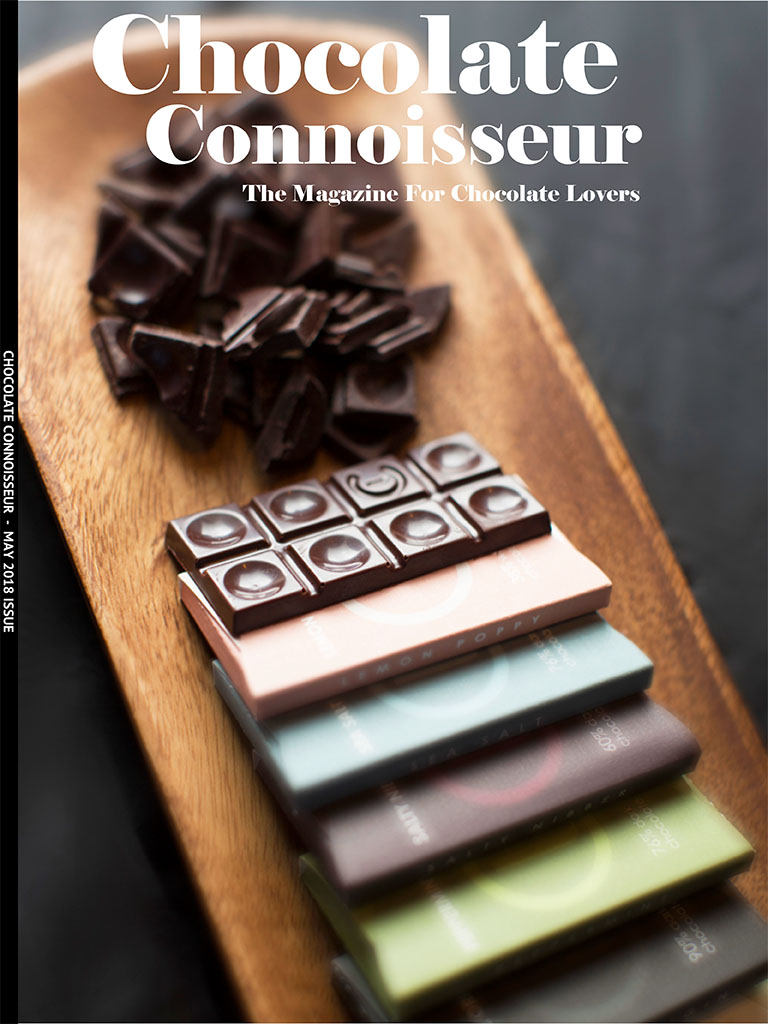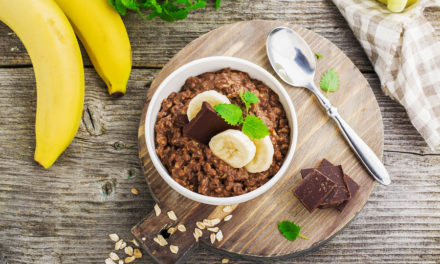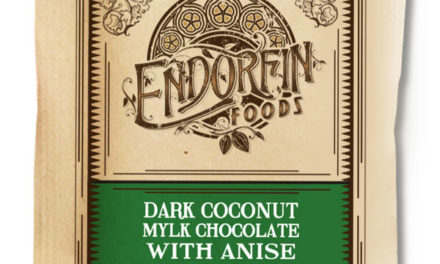THE HEALTHY BEAN:
Chocolate, Cadmium, and Lead
by Eric Battersby
Chocolate Cadmium? We always love diving into the positive health effects stemming from our favorite food, but we’d also be remiss to not mention any health concerns in the chocolate world as well. Ironically, as chocolate connoisseurs, the possible health danger we’re discussing today actually puts us more at risk, not less, so it’s very important that you pay attention to this article.
Don’t worry, it won’t cause you to stop eating chocolate, we promise… but you will likely focus a little more on one or two key potential hazards previously unnoticed.
Nibs Shine The Light
So what caused all the hub bub here in the first place? Cacao nibs. Seriously, cacao nibs. As I recently sprinkled a fair amount of Navitas Organic Cacao Nibs on my morning cereal, I noticed a warning label on the bag of the packaging. I’d frequently noticed similar warning signs during my time living in California, but never on any food labels – at least not any food within my own diet.
The label read as follows –
“WARNING: This product contains chemicals known to the state of California to cause birth defects or other reproductive harm.”
Ever the health-conscious one (even when my dietary habits stray to the point of ignoring my own health conscience), I felt compelled to dig into this bizarre warning staring back at me from an innocuous bag of organic cacao nibs. What I uncovered shocked the heck outta me, on multiple fronts, so let’s take a closer look…
Chocolate, Cadmium, and Lead – The Unholy Trinity
It turns out cacao, for all its wonders, can also contain potentially concerning levels of lead and cadmium. Pay a visit to the website AsYouSow.org, and you’ll catch a glimpse into the health concerns presented by both of these natural substances. Lead grabbed plenty of headlines over the past several decades, dating back to the days when gas stations still sold leaded gasoline (seriously, why?)… regulatory agencies thought lead paint posed no risk… and on and on. Knowing is half the battle, however, and with lead now firmly on our radar, it’s at least easier to combat this metallic poison.
As for lead in chocolate, As You Sow states the following –
“No level of lead is safe for children. Lead exposure has been a significant public health issue for decades. Lead is linked to a variety of neurological impairments, including learning disabilities, seizures, and a lower IQ. Developing fetuses and children are especially vulnerable to lead exposure because their brains are in critical growth and development stages.”
Chocolate cadmium tends to fly under the radar, however, to the extent that I personally didn’t even know it posed a risk. Recently I noticed a small burst of hair loss (a big thank you to my ancestors for the receding hair line), and started the usual process of looking for any diet changes over the past month or so. The only change? I added the Navitas Cacao Nibs to it. That triggered my investigation of the warning label I’d noticed previously, but ignored until now.
Digging a little deeper, I uncovered the cadmium and lead risks, and also found entire online communities of men looking out for their health together by getting blood tests done, or hair tests, to monitor levels of heavy metals in their system, among other things, and then sharing the results of their health journeys. Unsurprisingly, hair loss registered as one of the key issues.
The Cadmium Conundrum
Now I’m by no means unequivocally stating that cadmium levels in Navitas Organic Cacao Nibs kicked off some hair loss, but I am most definitely stating that I’m concerned. Step one in that situation of course is to chase down the facts. First, let’s take a look at cadmium.
According to BerkeleyWellness.com (from UC-Berkeley) –
“Cadmium is naturally found in soil – a result, for example, of volcanic activity, forest fires, and weathering of rocks – and is taken up by many plants, including cocoa plants. Soil can also be contaminated by “man-made” sources of cadmium, such as from the manufacturing of certain batteries and the use of phosphate fertilizers.
How much of the heavy metal ends up in cocoa beans depends on the geographic region, soil acidity, plant variety, and other factors. Further contamination may occur, to varying degrees, during processing and manufacturing of cocoa products as well as during transport and storage.”
Unfortunately, we all need to recognize that cadmium may indeed show up in our beloved chocolate. That leaves a few big questions still to answer, however. For starters, why are we even worried about cadmium content in the first place? Berkeley Wellness tells us more, noting that “Cadmium accumulates in the body and can have detrimental effects on the kidneys, lungs, bones, and possibly fetal development; it’s also classified as a probable human carcinogen.”
If it were only found in chocolate products, the cadmium conundrum would likely offer little concern, except for the highest content products that we’d likely all want to avoid. Sadly, the heavy metal appears in plenty of other foods, as Berkeley Wellness notes –
“Lots of foods contain trace amounts, notably rice, as well as seaweed, seafood, and some organ meats; even peanuts, sunflower seeds, leafy greens, potatoes, bread, and mushrooms contribute to dietary cadmium intake.”
This leads us to the all-important question…
How Much Cadmium is Too Much?
In order to address cadmium in our diets, we of course need to know how much cadmium equals too much cadmium. As is all too often the case in today’s world, “how much” apparently depends on where you live. Yes, that’s a nonsensical statement, but when you look at the varying safety levels across the globe, that’s exactly what you’ll glean from our health agencies.
JOIN THE FREE CC CLUB
For example, the at times negligent United States FDA has yet to even set a cadmium limit in food or supplements, while the World Health Organization set a guideline of 0.3 micrograms per gram in dried plants. The EU set a TWI (Tolerable Weekly Intake) of 2.5 µg/kg body weight, but also offers the most detailed guidelines, including new guidelines for children set to enforce in 2019 based on the following –
“In view of a possible reduction of dietary exposure to cadmium, existing maximum levels have recently been reviewed and additional maximum levels have been established for food commodities of concern for which no maximum levels existed yet.
These new maximum levels aim especially at an increased protection of infants and young children and concern chocolate and several categories of infant formula.
For chocolate, three maximum levels have been established depending on the content of the chocolate varieties. The strictest maximum levels apply to the chocolate varieties mostly eaten by children.
The darker the chocolate, the higher the maximum levels are. A fourth maximum level is set for cocoa powder destined for direct consumption. In order to allow the cocoa producing countries and chocolate industry to adapt to these new maximum levels, these maximum levels will only enter into force on 1 January 2019.”
Then there’s the outlier that kicked off this entire investigation – the state of California. California requires the aforementioned warning label on any product containing more than 4.1 micrograms of cadmium per daily serving. With no standards on these guidelines, trying to siphon out the exact truth tends to be quite a challenge, and that’s bad news for consumers and their health.
When faced with this perplexing situation, whether you think California’s guidelines overzealous or otherwise, truthfully they present the safest risk threshold.
In other words, if you live by the health mantra “better safe than sorry”, then California’s guidelines will likely serve you best. However, those guidelines were established in 1996, and they reference studies from even earlier.
In fact, the core study took place in 1986, and in that study, mice were given cadmium acetate in their drinking water. As you’ll see referenced below, ingesting cadmium naturally-occurring in plant-based foods likely presents a completely different picture versus ingesting cadmium-laced drinking water. So yes, clear as mud.
Too Little Information
Confusing as all those differing parameters may be, we at least hold a measuring stick now that can help guide our chocolate choices.
Sadly, the final piece to the cadmium puzzle remains largely hidden. Manufacturers never disclose cadmium levels in their products, even when the levels trigger a warning label (more on that in a bit).
Yes, you’ll see the warning if required in your area, but you won’t know the actual cadmium content, a serious obstacle to overcome if you’re concerned about overall cadmium intake.
Remember, many other foods contains cadmium, not only chocolate, and the problem truly originates here. The dose makes the poison to some extent, but when you’re ingesting the poison from multiple sources each day, and the poison accumulates in the body, well… yes, we’re concerned.
Sites like ConsumerLab.com perform actual lab tests on products to offers some insight, but to look at actual data, you must be a member, which means were not allowed to report on the data – we can only send you to the source. Here’s the core quote on the matter from ConsumerLab.com –
“Cocoa powders, chocolates, and other products made from cacao beans can be rich in flavanols — which may help with blood flow, blood pressure, memory, cholesterol levels. But beware: Many products are contaminated with high amounts of cadmium, a toxin you should avoid. In addition, the amounts of flavanols are rarely disclosed, so you have no idea what to expect unless you test them in a lab — which is what ConsumerLab.com has done.”
Thankfully, ConsumerLab.com still provides some valuable information without the raw data, including the real litmus test for health-conscious chocolate connoisseurs – what’s the flavanol content versus the cadmium and lead content in each chocolate? As they continue…
“Among dark chocolate bars, our tests revealed that two popular bars to be contaminated with cadmium at several times established limits. And being labeled “organic” did not ensure better quality. Also, the “% cocoa” (or cacao) on labels was often a poor indicator of flavanol levels. In fact, several bars claiming 80% to 85% cacao contained lower amounts of flavanols than bars claiming 56% to 77%.”
If you’re dealing with a health issue or are extremely health-conscious, ConsumberLab.com might be worth a look. You can subscribe and access everything on the site for less than $35 per year (note: we are not affiliated with them in any way).
Unfortunately, the list of products ConsumerLab tested consists almost entirely of big chocolate and what we report on at Chocolate Connoisseur in our On the Chocolate Regular column – decent to good quality chocolate you can pick up almost anywhere, a cut above big chocolate products, but in most cases nowhere near the quality of your smaller bean-to-bar makers.
We’ve listed a few of the notables below, but for the full list, click here to visit the exact page on ConsumerLab.com.
The bottom line – we’re essentially left in a state of ignorance here with our chocolate, because without firm guidelines in place, and without easy, required testing for all chocolate, we simply won’t know when our diets may present a health risk. We’ll touch on that briefly at the very end here to give you a final takeaway on how to move forward, but before we do, let’s address a key part of the problem that needs to be resolved as soon as possible – openness in regards to cacao powder and cadmium.
Navitas Not Making Friends
I’ve very much enjoyed the flavor of Navitas Cacao Nibs, now a regular staple in many of my mornings as a tasty, crunchy add-in to cereal or oatmeal. Unfortunately, this whole cadmium and lead situation now puts a bit of a damper on breakfast. Cacao powder (another core product from Navitas and several others), clearly presents the most concern, however. ConsumerLab.com reported that “…we found most cocoa powders to have high concentrations of cadmium — around 1 to 1.5 mcg per gram — which is much higher than the World Health Organization limit of 0.3 mcg per gram.”
To make matters worse, a trip to Navitas’ website finds the company only focusing on half the problem –
“All of Navitas Organics products are certified organic and grown with traditional, organic agricultural practices. The elements that triggered this California Prop 65 labeling requirement are lead and cadmium. Lead and cadmium are naturally occurring minerals and are present in soil around the globe to varying degrees and as such can be absorbed by plants grown in that soil.”
Those statements certainly speak the truth, but here’s where Navitas goes slightly astray:
“Many common foods have trace levels of lead and cadmium, including dairy, meats, grains, fruits, vegetables, nuts, seeds and canned or prepared foods. In many instances these common foods exceed the established Prop 65 standards.”
No one will fault Navitas for the lead and cadmium situation in cacao, nor will they likely stop eating cacao in its entirety simply because of California’s warning label on the packaging. We should all, however, expect disclosure on something as important as heavy metal consumption, a serious health concern in today’s industrialized world.
When Navitas acknowledges the problem’s existence but then completely sidesteps cadmium in the process, they fail miserably with an opportunity to build trust. Instead, it looks like they’re hiding something.
Everyone needs facts to properly formulate their own healthy diet, and although Prop 65’s labeling requirements may seem staunch, understand that reasons for the extra precautions do indeed exist, especially for children or pregnant mothers.
While this statement also technically rings true, it unfortunately misleads. Rather than disclose numbers on cadmium levels, Navitas instead mentions other foods containing trace levels of cadmium, deflecting away from what truly matters here – the cadmium levels existing in Navitas own products.
They do provide more detailed information on lead, clearly showing Prop 65’s requirements for the substance compared to other regulatory entities, and also detailing lead levels in many popular foods that register well over the Prop 65 requirements (including pineapple and avocado, the two highest).
They do not, however, provide any such guidance for cadmium whatsoever, and perhaps more alarmingly, they don’t disclose the cadmium and lead levels in their own products.
When cacao beans trip the warning wire, we need to understand why, look at the numbers, and assess accordingly for ourselves as individuals. Navitas owes it to its customers to clearly deliver such information, if the company hopes to maintain high standing as an organic, superior quality food products manufacturer.
We’re reaching out to Navitas for comment and will pass along an update if we receive a response. In the meantime, you can click here to view Navitas response to Prop 65.
Sunfood Superfoods… Not So Super?
Following in a similar vein as Navitas, Sunfood takes it a step further and actually attacks Prop 65. The companies arguments certainly raise valid points, and we recommend you click here to read through Sunfood’s response. Here’s the core –
“Minerals like iron, calcium, lead and cadmium are found in soil all across the globe. They make their way into many of the crops we eat through root uptake and plant metabolism. This is how the plant gets nourishment to grow in order to provide you (and us) with numerous health benefits when we eat them.
These minerals are integrated into the fibers of the plant, and organically bound to them. When we eat these plants, our body uses, absorbs and disposes of these substances very differently than if we accidentally ingest flakes of lead paint.
For example, in plant-based foods that contain naturally-occurring (what we call “bound”) lead, only 20% of this lead is actually absorbed because the rest is chelated in the fibers and tissue of the plant, and passes out of the body undigested.
Similarly, for any naturally-occurring cadmium in plant-based foods, only about 4% is actually absorbed (source: Essential Living Foods).”
They reference Essential Living Foods here, another superfoods company, but a search at that company’s website found no such source material, nor did Essential Living Foods discuss lead or cadmium anywhere on the site. In other words, we seem to be witnessing a sidestep of this entire discussion right now, which raises red flags.
Unfortunately for Sunfood, their aggressiveness in railing against the guidelines further underscores the same problem we witnessed with Navitas – no clear focus on cadmium, which appears to be a much bigger culprit versus lead, particularly in products like the cacao powder Sunfood sells. It’s all particularly alarming when, say what they will about California’s Prop 65 guidelines, the World Health Organization does indeed offer a concrete figure specifically related to plant-based foods (0.3 micrograms per gram as noted earlier).
Empowering Yourself
All this information, and the usual conflicting reports, can lead to a paralysis when it comes to taking control of your health. For chocolate, I suggest we do not let that happen. If you’re dealing with a health issue that may be the result of heavy metal toxicity (or are pregnant), then you’ll likely want to take significant action when it comes to chocolate. Otherwise, from everything we’ve read, it appears that paying extra attention to cacao powder, and to a lesser extent cacao nibs, are the two best courses of action.
Unless you eat an exorbitant amount of chocolate every day, it seems doubtful that chocolate bars or other chocolates will pose much of a risk. ConsumerLab.com appears to back up that statement as well, based on data from their own tests –
“The dark chocolate bars we tested had concentrations which were about 1/10th the amount found in cocoa [powders]. The main reason why there is less cadmium per gram in dark chocolate than cocoa powder, is that cadmium is in the cocoa solids, which, when dried, is cocoa powder. Dark chocolate contains these cocoa solids, but also includes cocoa butter and sugar, which can make up a substantial portion of the chocolate, reducing the concentration of cadmium.
However, this does not fully explain the higher cadmium in cocoa powders. In fact, on average you ingest about 4 times as much cadmium from cocoa powder as you do as from dark chocolate to get an equivalent amount of flavanols.”
You’re less likely to run into cadmium concerns eating chocolate itself versus cacao powders – great news for chocolate, not so great news for cacao powder. Drinking chocolate makers like CACOCO and Firefly weren’t on ConsumerLab.com’s testing list of course, and we’ll check in with both of those companies soon to get their takes on the situation.
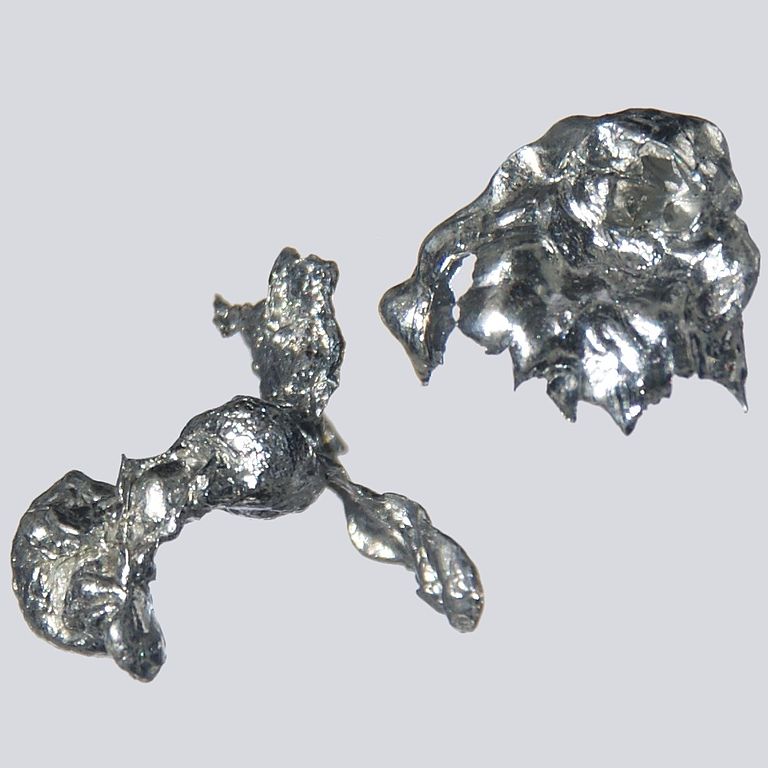
What is cadmium? Take a look above…
In the meantime, until more testing takes place, both for documenting cadmium levels in cacao and for assessing the true potential damage to our health, your best course of action appears to be gradual levels of caution based on product, with cacao powders first, cacao nibs second, and then your chocolate itself a very distant third.
The Final Word
At this stage in the cadmium situation, As You Sow’s reference table appears to offer the most information. We don’t get numbers, but you can at least see a much larger range of chocolate products, especially of use to chocolate connoisseurs because at least their table includes some chocolate we might actually eat. The table simply indicates if a chocolate’s cadmium levels tripped the California guidelines or stayed under (click here to view).
The cruel irony in all this is that cheap chocolate wins. Because lesser quality chocolate equals less cacao content (and less healthy flavanols), it also equals less cadmium and lead risk. That’s clearly evidenced by the EU’s measured approach to rating chocolate for children, wherein they look at the cacao percentage in assessing risk level.
Of course, replacing higher quality cacao with cheap sugar, chemical preservatives and any other combination of not-so-nice ingredients quickly undercuts that cadmium risk. So stick with what you’re doing, just start paying a little more attention to cadmium and lead. I guarantee you’ll be hearing much more about both substances in the future as regulatory agencies continue to catch up on the health risks we’ve yet to fully grasp.
CHOCOLATE CONNOISSEUR ULTIMATE
Your Ultimate Chocolate Passport is Here. Unlock EVERYTHING We’ve EVER Published, with a FREE Ultimate Guide, all for one shockingly low price...
LINKS AND REFERENCES
As You Sow – https://www.asyousow.org/environmental-health/toxic-enforcement/toxic-chocolate/#chocolate-tables
BerkeleyWellness.com – https://www.berkeleywellness.com/healthy-eating/food-safety/article/there-cadmium-your-cocoa
ConsumerLab.com – https://www.consumerlab.com/reviews/Cocoa_Powders_and_Chocolates_Sources_of_Flavanols/cocoa-flavanols/
Navitas Prop 65 – https://www.navitasorganics.com/prop-65
Sunfoods Prop 65 – https://www.sunfood.com/sunfood-prop-65/






